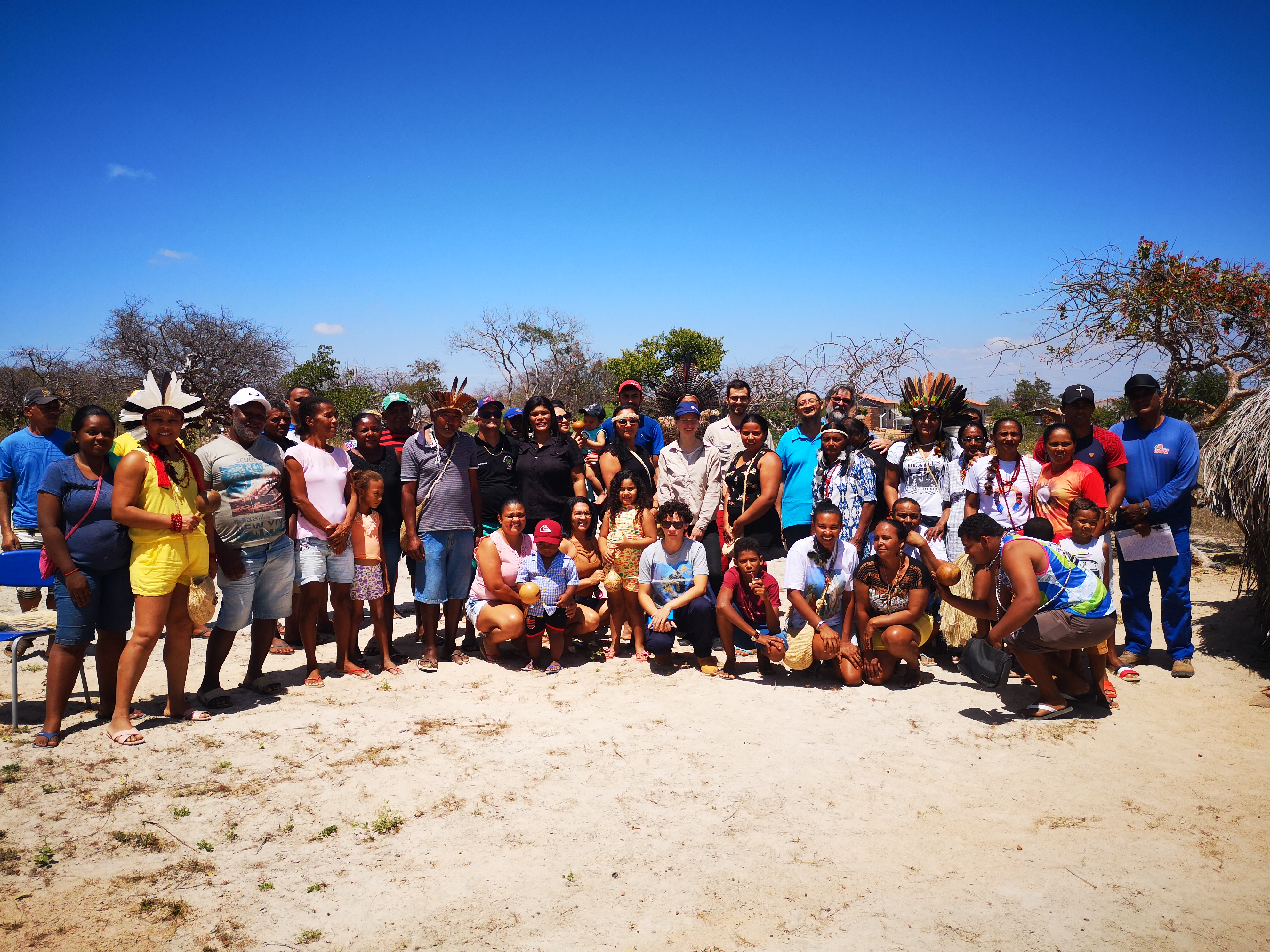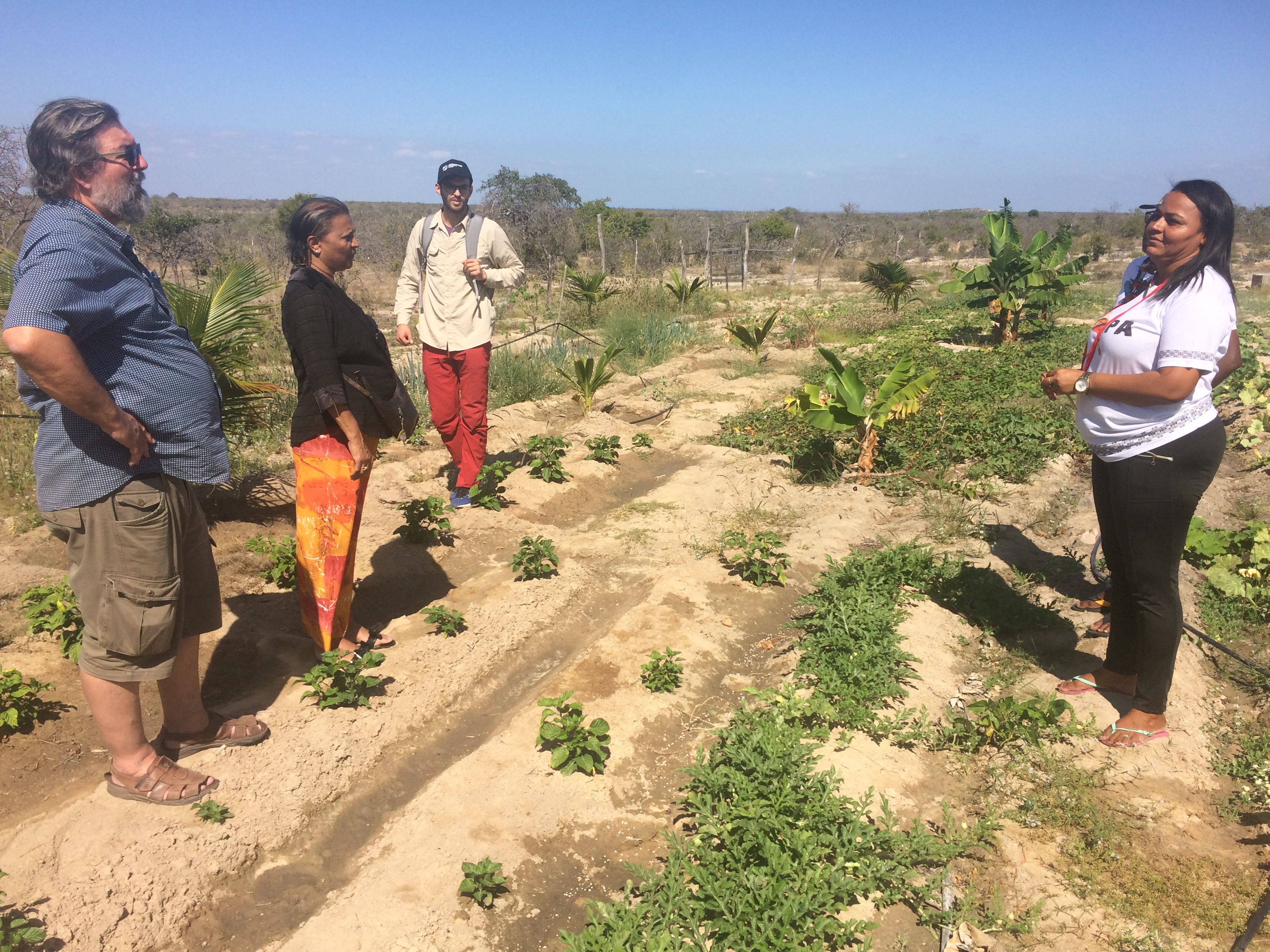Fraunhofer Chile's Agrovoltaic Program started working with local community in northeast Brazil
• In an intense program of activities, the team formed by Patricia Gese and Gonzalo Ramírez, visited an indigenous community in the state of Pernambuco, gave talks at the Public University of Sierra Tallada and presented an International Workshop on Distributed Solar Energy and Local Sustainable Development with the Centro Cultural Brasil Alemanha (CCBA).
Promoting the development of communities through the incorporation of solar energy to improve productive diversification, under the Agrovoltaic or Agrivoltaic concept, was the objective of a mission carried out by the professionals of the Center of Technologies for Solar Energy (FCR-CSET) of Fraunhofer Chile Research, Patricia Gese and Gonzalo Ramírez, in rural northeast sectors of Brazil.
"Through these activities we seek to encourage not only food production and solar electricity, but also to help reduce energy poverty and increase productive diversification in arid/semi-arid areas in northeast Brazil, as well as to promote the deployment of distributed energy resources in rural areas at the distribution level" explained researcher and engineer of innovative photovoltaic projects, Patricia Gese.
International workshop
Together with Gonzalo Ramirez, Leader of the photovoltaic systems research line of FCR CSET, they presented the Agrovoltaic concept at the international workshop "ENERGIA SOLAR E DESENVOLVIMENTO LOCAL SUSTENTÁVEL - Projetos agrofotovoltaicos: Chile, Alemanha e Brasil/Pernambuco" organized by the Centro Cultural Brasil Alemanha (CCBA) in Recife.
During the day, an intense discussion was generated on how to consider environmental and social aspects to develop business models that allow the implementation of a sustainable solution, this because in Brazil the areas of high solar availability coincide with interior, rural areas and with indigenous settlements that today suffer from economic energy availability (energy poverty), local economy, loss of cultural identity and zonal uprooting.
"Agricultural activity in (semi-) arid areas is hampered by the availability of economic water in rural areas. Additionally, in northeast Brazil, part of the Andean region and Central America, climate change is expected to negatively affect crop yields and local economies, compromising food security. That is why climate change mitigation and adaptation activities are necessary. On the other hand, the CCBA seeks solutions to promote the local economy with new business models," said Gonzalo Ramírez. I would prefer that you put Patricia. I am not an expert on climate change or read the documents referenced.
The professional highlighted that in this context, together with CCBA, the University of Sierra Tallada and FCR-CSET, a visit was made to an indigenous village that has access to water from a nearby reservoir, but with high electricity costs due to the water pumping and treatment system that limits the use of water for agricultural activities.
"The Agrovoltaic concept gives the opportunity to cover the electrical demand of water pumping for residential supply (today they have partial supply) with photovoltaic solar energy and additionally improve the environmental conditions to carry out agricultural activities thanks to the capacity to decrease the effective irradiation that the crops perceive under the solar field. In the same line, there is the concept of combining electrical energy production with the production of fish (aquaculture) under the photovoltaic plant. Some species require less direct light, then the shade of the photovoltaic field allows for a reduction in water evaporation. Additionally, it is possible to re-use water for irrigation of vegetables, once they have been discarded from the aquaculture process (according to salinity level)" said the professionals.
Agrovoltaic and fish farming
During the FCR-CSET visit to the Sierra Tallada University, the Agrovoltaic concept was presented, generating in a first stage a discussion on how Agrovoltaic can be combined with fish production. In conversation with the participants, it was identified that the production of crop species or fish with greater added value would allow the improvement and diversification of the local rural economy, this in addition to improving the existing condition of energy poverty (basic for raising the quality of life of the villages).
In this sense, Patricia Gese indicated that "on the one hand these solutions require a deep process of optimization of the structure to the needs of cultivation and fish farming, in order to be cost effective (both in investment and operation costs). On the other hand, it is also necessary a business model that allows harmonizing all the value generated (value added flows), as well as reviewing the legal and security aspects of the execution of this type of structures and practices of electricity generation and financing".
 Fraunhofer Chile Research
Fraunhofer Chile Research

